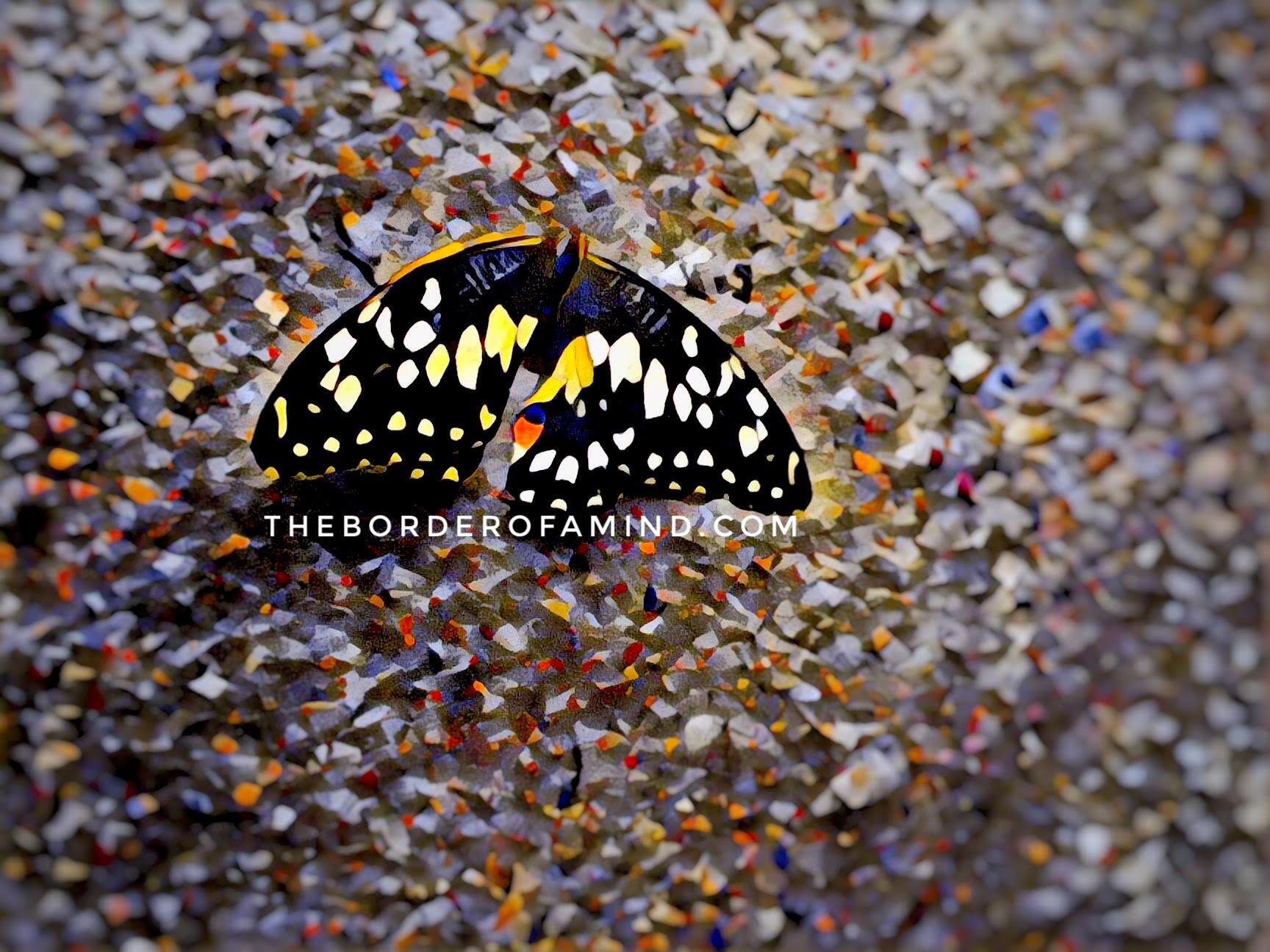Here is another slice into the ponder series of The Border of a Mind. To rehash the theme, these chapters are an effort to take our minds through subtle sub-layer things that we fail to ponder or think about in our daily routines yet which magically turn around as miracles in on itself. If you have come here before, you’d recollect about the journey of birds or the perception of our brains which we skimmed around. During my last visit to India, I saw this beautiful butterfly on a wall of a skyscraper (scroll down for the photograph). As we know, it’s very difficult to spot a butterfly these days, especially if you are living in a heavily urbanized setting.

Anyone would admire the beauty and elegance of butterflies with their color wing patterns and flights. The title of this post is attributed to the ornamental beauty in them owing to which we can’t take our eyes off them!
The incremental stages of formation of a butterfly is a masterpiece of process art. Silkworms are among the animals which lay the highest number of eggs. We are talking of about 450 to 500 eggs. Since there are way too many eggs, there are chances that these may be get scattered or even strewed by the wind. To prevent this, silkworms attach these eggs by each other by a special material it secretes (string). Caterpillars on the lookout for a nice place to have their eggs laid discover one of these “branches” of eggs, if you will and would stick their eggs with the same string. Cocoon building with the string starts at this stage. Caterpillar would turn around thousands of times and would secrete around 1500 metres of strings!. At the end of this stage, the caterpillar metamorphosizes into an elegant, beautiful butterfly turning out to be another embellishing ornament around us.
If you didn’t know, for the butterfly to fly, its body heat has to be at a certain temperature. Butterflies use amazing techniques to accomplish this. For example, one such type is the colias butterfly and it won’t be able to fly if its body temperature drops below 28-degree celsius. They then open their wings at a certain angle so that their upper sides are exposed to the sun. If it reaches 40-degree celsius, for instance, it rotates by another 90 degrees in order to receive sun’s rays horizontally. Using this methodology, they absorb little heat and accordingly regulate their body temperature. I bet you didn’t know about this thermal engineering expertise in butterflies. We must have noticed beautiful spots on the butterfly wings. Yeah, they are aesthetically breathtaking and adds a gradient, but did you know that they serve another purpose? These spots help serve the butterfly to maintain higher body temperatures and these spots are located close to the points that are to be best kept warm. These spot portions generally warm up quickly compared to other parts. The location of these spots is in such a way that the distance that needs to be covered for heat transmission is shortened. As you know, a pair of lenses can be spaces and angled properly to concentrate light at a certain spot and make the area hot. Some butterflies species such as Pieris, for instance, use the same technique. I believe, thinking deeper and delving deep into such intricacies would help us better appreciate the miraculous nature of these things. How do such magic happen around us when we are too busy to even put our thought into it. Ponder! : )

